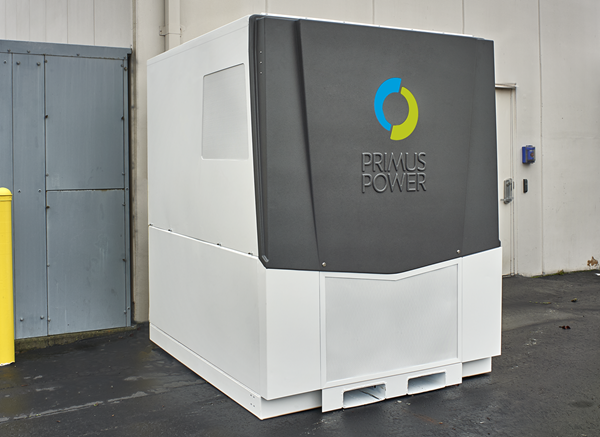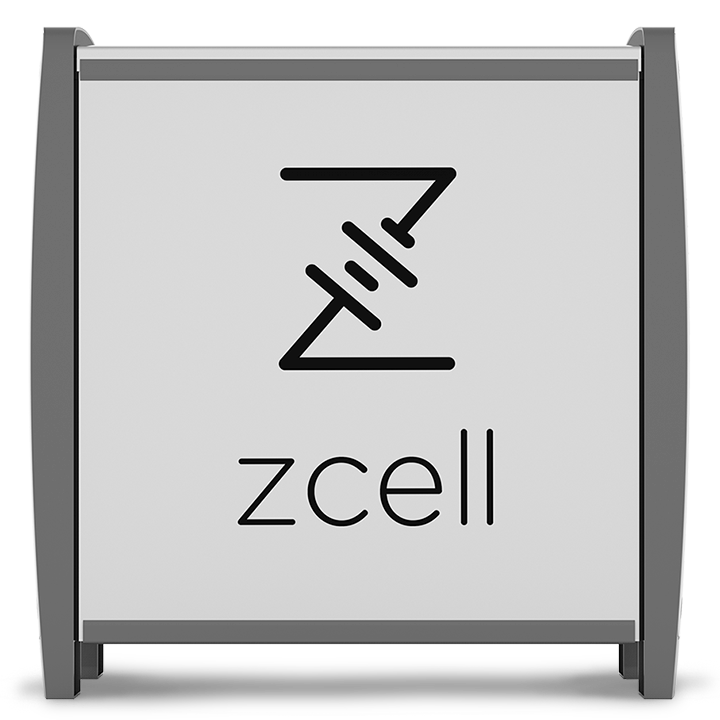The most recent article
“Getting into the Flow with Vanadium”
may have disappointed some investors who were expecting more opportunity for a
stake in building energy storage. Large
scale energy storage is an idea to which many in the utility industry speak,
but few power producers have made significant investments beyond lithium ion
batteries. Flow batteries have long been
touted as a cost-effective and technically superior alternative for wind or
solar power storage or for load-balancing efforts on the electric grid, as
examples. In the last post we looked at
the flow battery producers using vanadium materials as the foundation for the
electrolyte that literally flows through the cells of these novel battery
designs. In this post we look at an
alternative material - zinc bromide.
A zinc bromide
salt is dissolved in water and pumped through a stack of cells in the
battery, which functions much like an electroplating machine. As the battery charges, the zinc is
electroplated onto conductive electrodes as the bromide forms. When the battery discharges, the reverse
process takes place as the metallic zinc ‘plated’ onto the electrodes dissolves
into the electrolyte. The zinc is not used up and can be plated back again in
the next charge cycle.
There are some
special considerations for zinc bromide flow batteries. One problem is the need to discharge regularly,
otherwise zinc dendrites can form and puncture the separator between the cell stacks. The electroplated zinc can be stubborn, requiring a
special, periodic step to fully remove zinc from the battery plates.
A big plus for
zinc bromide is cost. An inorganic
compound, it can be produced through a reaction of zinc metal and bromide, a salt of hydrobromic acid. Zinc is one of the most common elements on
earth and is a readily available commodity.
While relatively inexpensive, we note that zinc has increased over 30%
from a year ago. Zinc reached an
all-time high price in 2006 at over $4,600 per ton in November 2006, but has
since retreated to $2,615 in early April 2017.
Zinc bromide is
already widely used in the oil and gas industry as drilled wells are prepared
for the pumping or harvesting phase.
Zinc bromide is considered toxic and requires special equipment and
safety precautions for handling.

Investors can
get involved with Primus Power, although there will be a bit of a wait. The
company just completed a private equity financing, taking in $32 million in new
capital. That brings total capital
raised to $94 million from a widely scattered group of investors from Hong
Kong, Saudi Arabia, Russia and the U.S.

The company is a
bit more accessible for investors at least to those who are prepared to trade
on the Australia exchange. Redflow has not yet delivered profits and so trades
with a negative price/earnings ratio on both a trailing and forward basis. From a cash earnings standpoint the picture
is still a bit cloudy as the company has still not reached positive cash
flow. Looking at the glass as half full,
this means Redflow must tap the capital market from time to time to keep
operations going, providing opportunities for qualified investors to get a
piece of the pie.
For U.S.-based
investors who do not want to venture too far afield, there is EnSync, Inc. (ESNC: NYSE), a zinc bromide
flow battery developer in headquartered in Wisconsin. EnSync
wants to serve commercial and industrial markets with a ‘behind the meter’
solution it calls Matrix Energy
Management coupled with its Agile
Hybrid Storage system of zinc bromide flow batteries and lithium ion
batteries. EnSync also offers the Agile Flow Battery on a standalone
basis.

In the twelve months ending December 2016, EnSync reported $10.8 million in total sales, resulting in a net loss of $18.9 million. Operations required $10.3 million in cash to support operations. At the end of December 2016, the company had $17.6 million on its balance sheet, which could give EnSync the runway needed to get operations off the ground and to breakeven.
The Matrix Energy Management system and the
ability to offer battery alternatives could be EnSync’s key competitive
strength. The company recently announced
a contract win from the Alliance for Sustainable Colorado for a facility
located in downtown Denver. The project
involves a 20-kilowatt rooftop solar installation, 84-kilowatt hour capacity EnSync
lithium ion batteries, and EnSync’s software application to manage internal
loads.
While the zinc
bromide battery developers still offer investment opportunities that are little
more than options on flow battery technology, there appears to be far greater
success in the market by this group than those with vanadium-based solutions. Our field work did not uncover any
technological reason behind why one group should have so much more success than
the others. However, we do note that the
vanadium group has more members with a background in mining or producing vanadium. It is possible that the mining or industrial
materials production background does not lend well to the requirements of
battery development and market penetration with a finished product.
Neither the author of the Small Cap Strategist web
log, Crystal Equity Research nor its affiliates have a beneficial interest in
the companies mentioned herein.
No comments:
Post a Comment